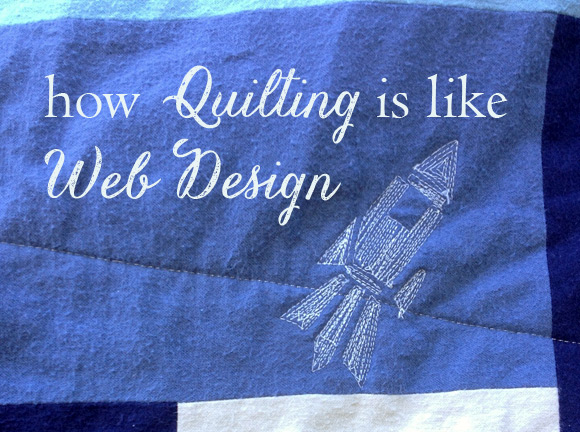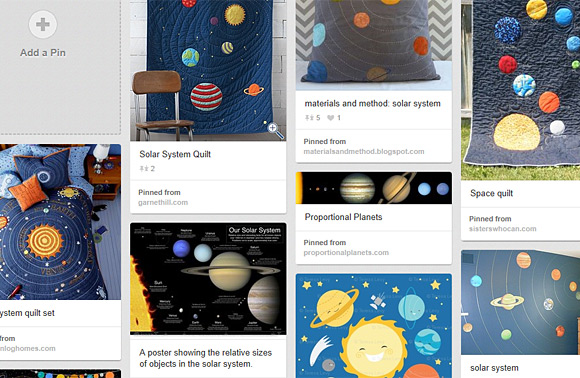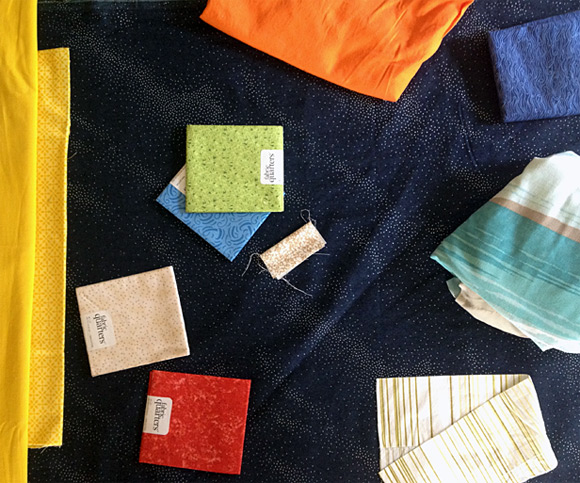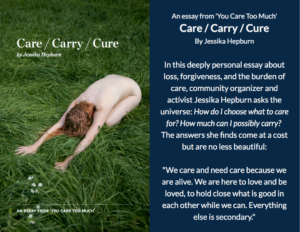

I used to spend a huge amount of my time designing and coding websites. I found that when my creative web design company, Aeolidia, grew enough that I was in a management role and could no longer do client work myself, I needed a replacement creative activity. Today I’m taking a break from my usual all-business posts here to show you something just for fun.
My son was almost two years old, and I found some vintage jungle-themed sheets at the thrift store and thought I’d see if I could make a quilt out of them. Well, I dusted off my old Home Ec. sewing skills and I made him a quilt in time for his second birthday.
I am a bit of a crafting dilettante, I must confess. I have dabbled in knitting, crocheting, doll-making, painting, jewelry-making, embroidery, and the list goes on. Once I figure out the basics of how to do something, I tend to lose interest, and rarely have many completed projects to show for my efforts. However, the quilting was another story, for some reason!
Since that first jungle quilt a few years ago, I’ve made eight quilts, and while working on them, I noticed that the process of making a quilt shares many similarities with designing a website. I think that’s why it keeps my interested, and why I’ve stuck with it.
I’m going to show photos of a recent quilt that I made for my son, as a fun example of why I find making quilts a good creative replacement activity. Calvin has been pretty obsessed with space for the last year, so we dreamed up the Denim Solar System quilt.
How Designing a Quilt is Like Creating a Website
1) Both projects start with a sketching or “wire frame” stage.
With a website, you think about all the things that will need to be on the home page, and what links you’ll need elsewhere, and put together a rough sketch of the layout, so you can be sure that once you are working on the pretty details, you have the bones of the website right.
With a quilt, I take graph paper and plan out a geometric design that’s going to fit the size I want and I work through different ideas at different sizes.

2) They both use the grid system.
When working on my quilts in the graph paper notebook, I saw that both websites and quilts use a grid or pixel system. Since everything in a website is built on a box system, a website is built of many rectangular sections. Quilts are also geometric, usually being pieced together from many smaller squares, rectangles, or triangles (not the planets quilt, but every other quilt I’ve done!). There are ways to make websites and quilts have rounded elements, but ultimately they are blocky beasts.
3) Mood boards are useful for both.
Coming up with a color scheme, patterns, shapes, and setting the general tone of a website or quilt is important. I find myself using Pinterest to gather quilt ideas in the same way our web designers capture the mood of our clients’ sites.

4) Choosing fabrics feels like using stock art.
Our web designers are thankfully much more skilled than I was, back when I was designing websites, and they usually create all the design elements involved in their websites. But back when I was working on websites, I was not an illustrator, and would often go to stock art/illustration sites to pull together the “materials” I’d use to design a website, be it a repeating pattern, illustration, or fancy banner.
Selecting the fabrics I want for a quilt and laying them out to spark ideas feels just like pulling my patterns, fonts, and colors into Photoshop to make a web design come to life.

5) Client feedback on mock-up.
For this year’s birthday quilt, my son was turning five, and had a lot of input. I showed him my sketches to see what he thought, and he offered feedback to me, much like our clients do when seeing the wire frame or first website concept.
In this case, Calvin told me:
- happy faces were preferred over plain planets
- the planets had to go in the right order, but didn’t need to be a straight line
- the planets should be roughly proportional to real life
My client also came to the fabric store and was involved in fabric choice.

6) Prototype when trying something new.
I hadn’t done much appliqué before, and I wasn’t sure how it would all turn out, so I worked on a few smaller test planets and tried some things that didn’t work, before settling on the final design.
When a web design client asks for a new feature, we’ll often build a prototype of it, in a very limited, basic state, to first see if it’s even do-able, and then have the client try it out to see if it works for her, before we sink a lot of time into doing it right.

7) Settling in to develop the project.
Once all the design work is out of the way, the time comes to actually make the quilt or develop the website. Most of our designers now hand that work off to a dedicated developer on our team, but I used to move right along to code my designs myself.
This stage of the project also has a whole lot of similarity. Measurements need to be taken (pixels vs. inches) and you need to either slice up your fabric or slice up a Photoshop document (and they do call that “slicing!”). Blocks need to fit next to each other, and then it’s either sew, sew, sew, or code, code, code.
The creative work is not done, because there are usually some kinks that need ironing out at this stage, and often some embellishments need to happen.

8) Adding special features to surprise and delight!
We’re always looking to delight both our clients and their customers. We will hide cute little illustrations behind menus, which are only seen when you mouse over, or put special care into making the newsletter signup form clever and eye-catching.
My client was surprised to find a glow-in-the-dark rocket stitched next to the Earth!

The final product
In the end, you have a project that took a lot of planning, a whole bunch of measuring, a knack for color and balance, and perhaps some sweat and tears during the development phase. Hopefully, your client is just as pleased as you are (and cozy, too, in the case of the quilt!), and you can snap a few pics for your portfolio.

You can see my quilt “portfolio” here, and Aeolidia’s web design portfolio here.
What is your creative outlet? If you’re in the business of being creative, do you also do projects just for yourself, or are you satisfied with your main method of creativity?


[…] Read article on Oh My! Handmade Goodness » […]